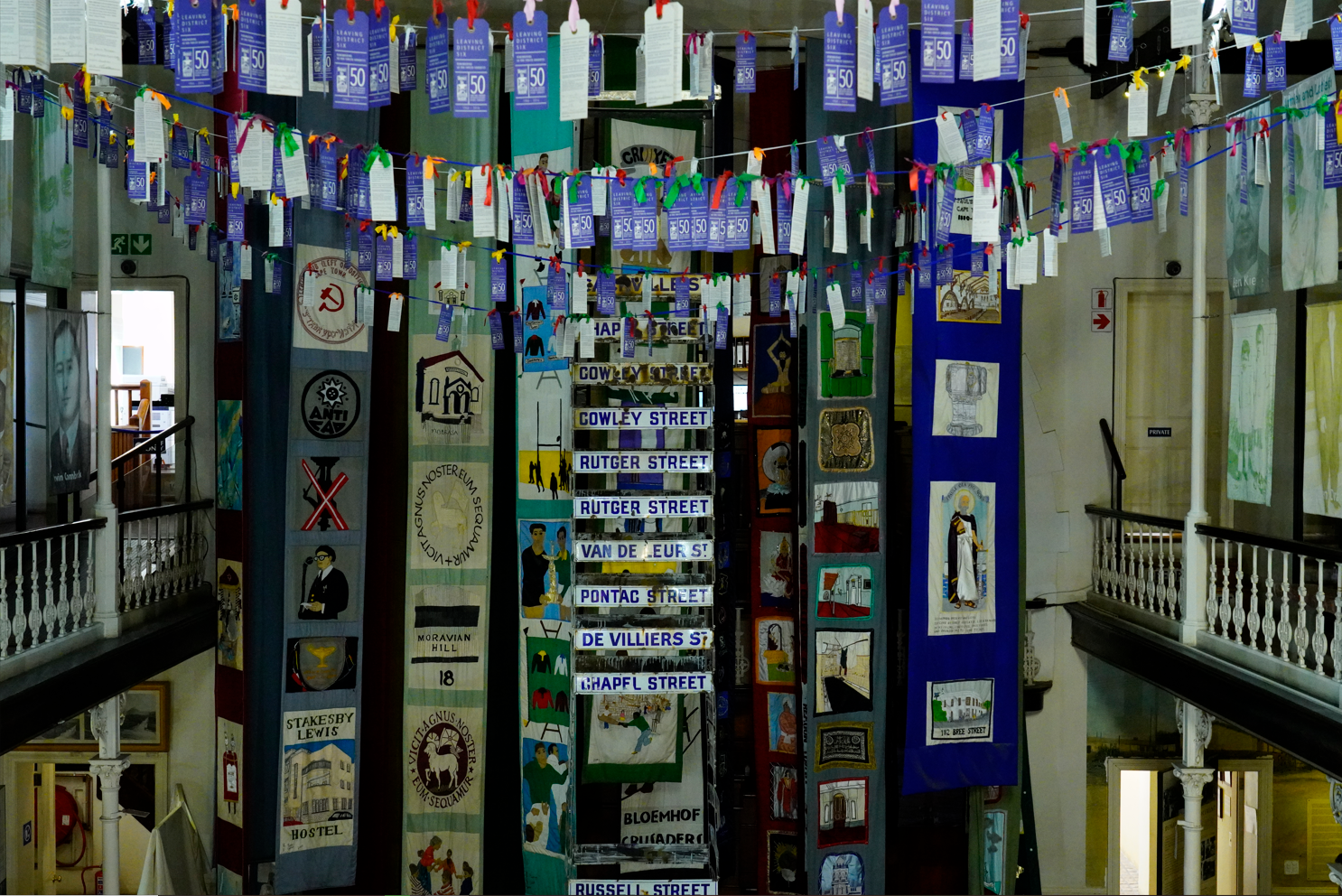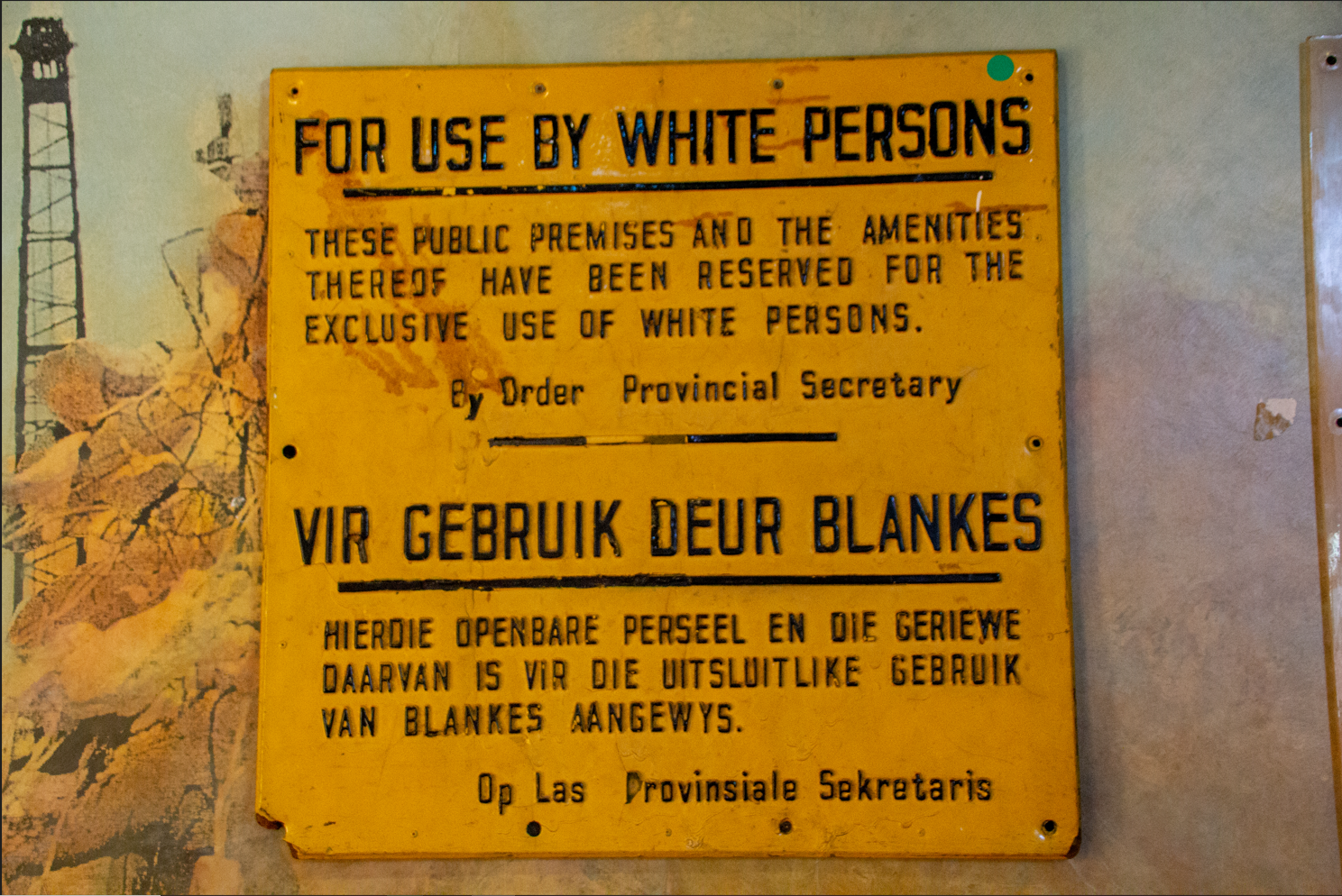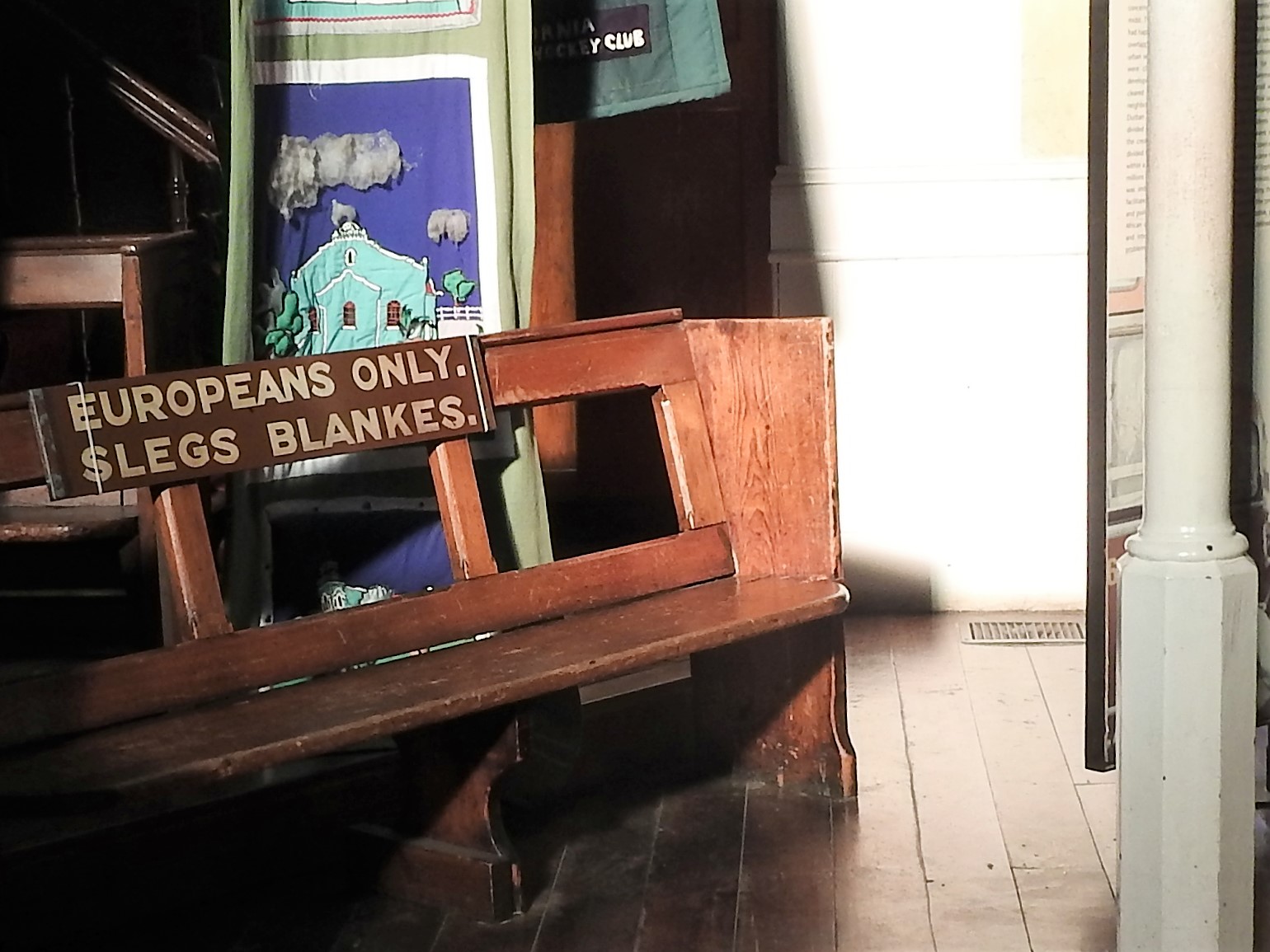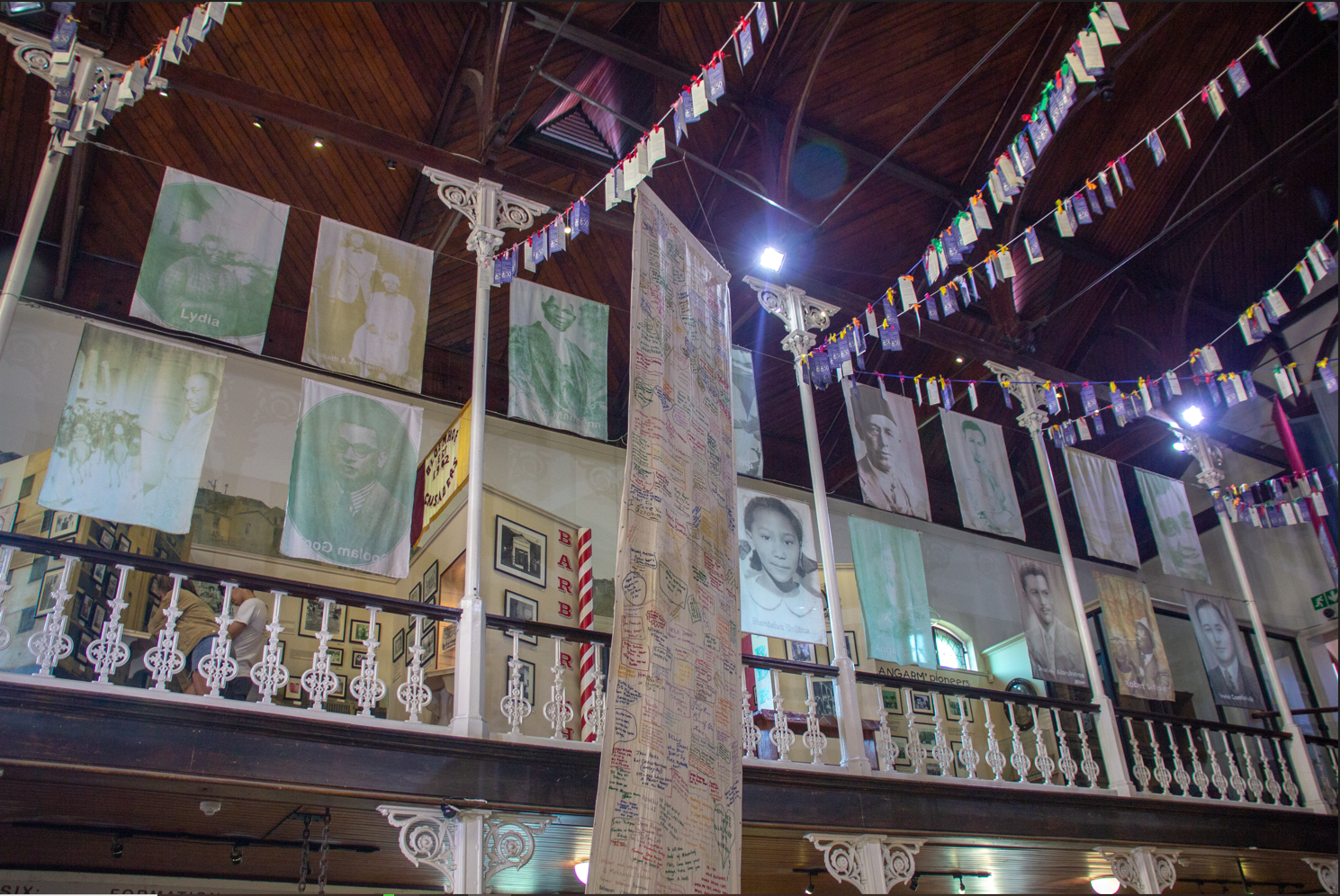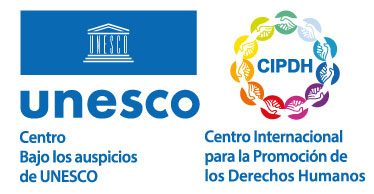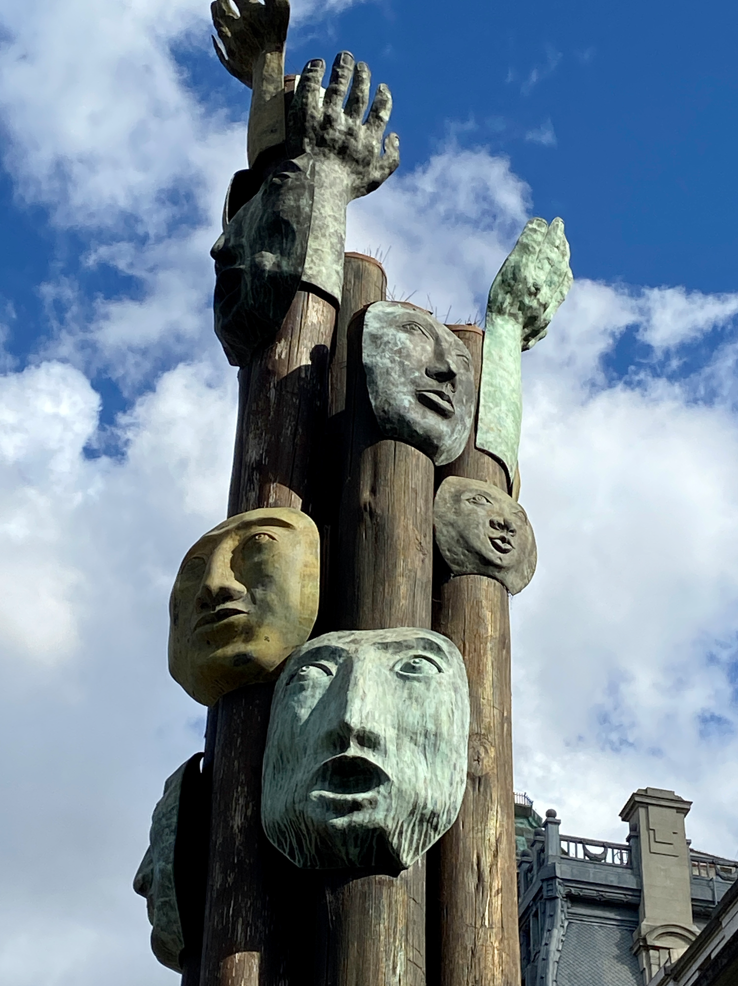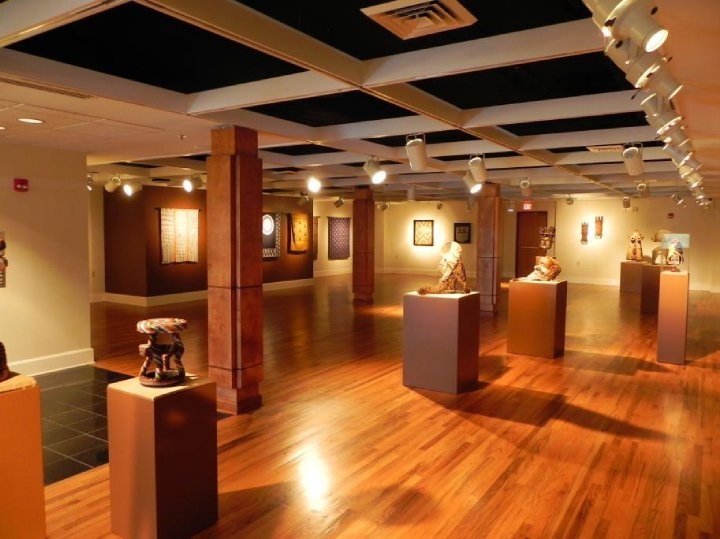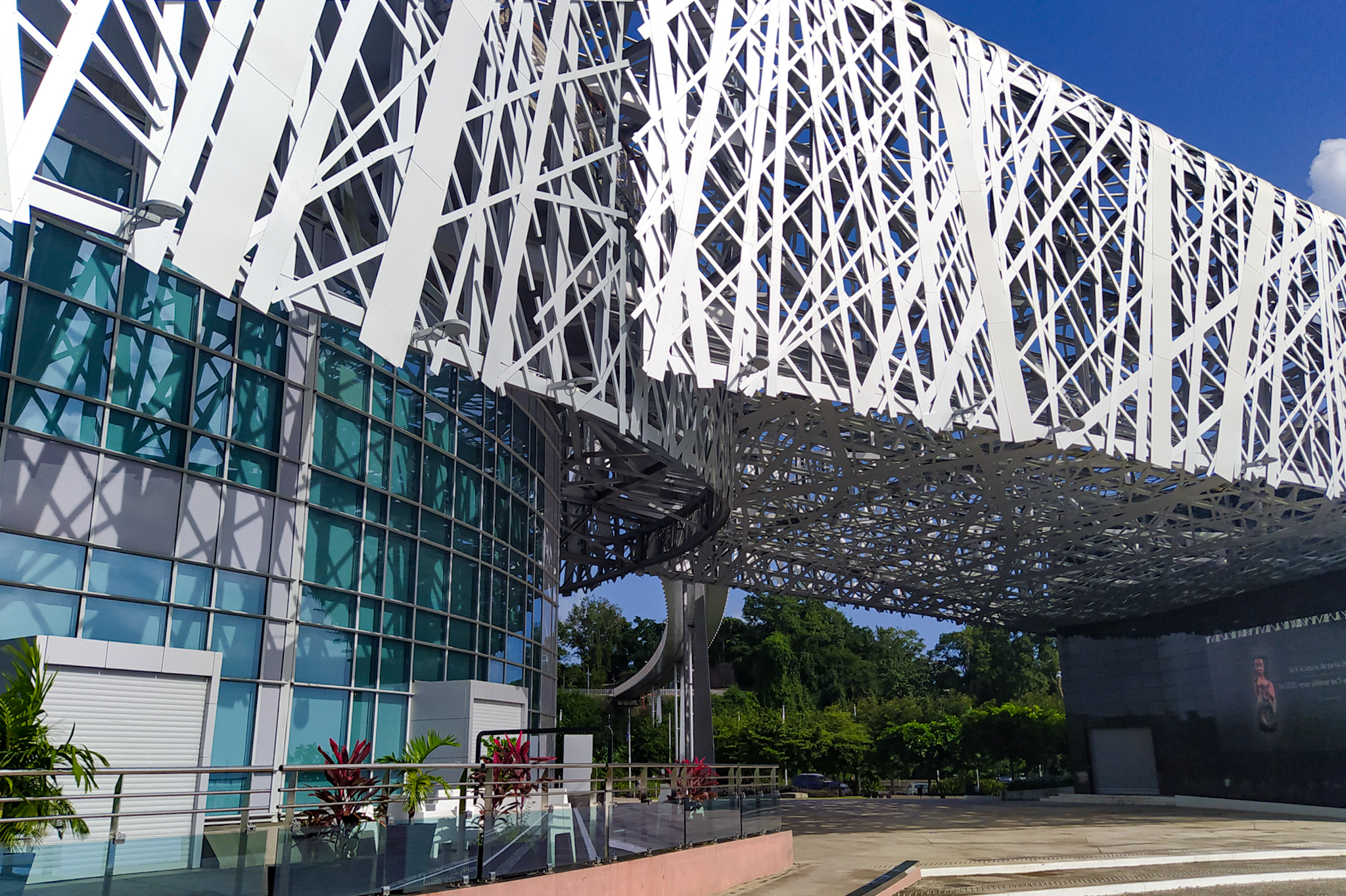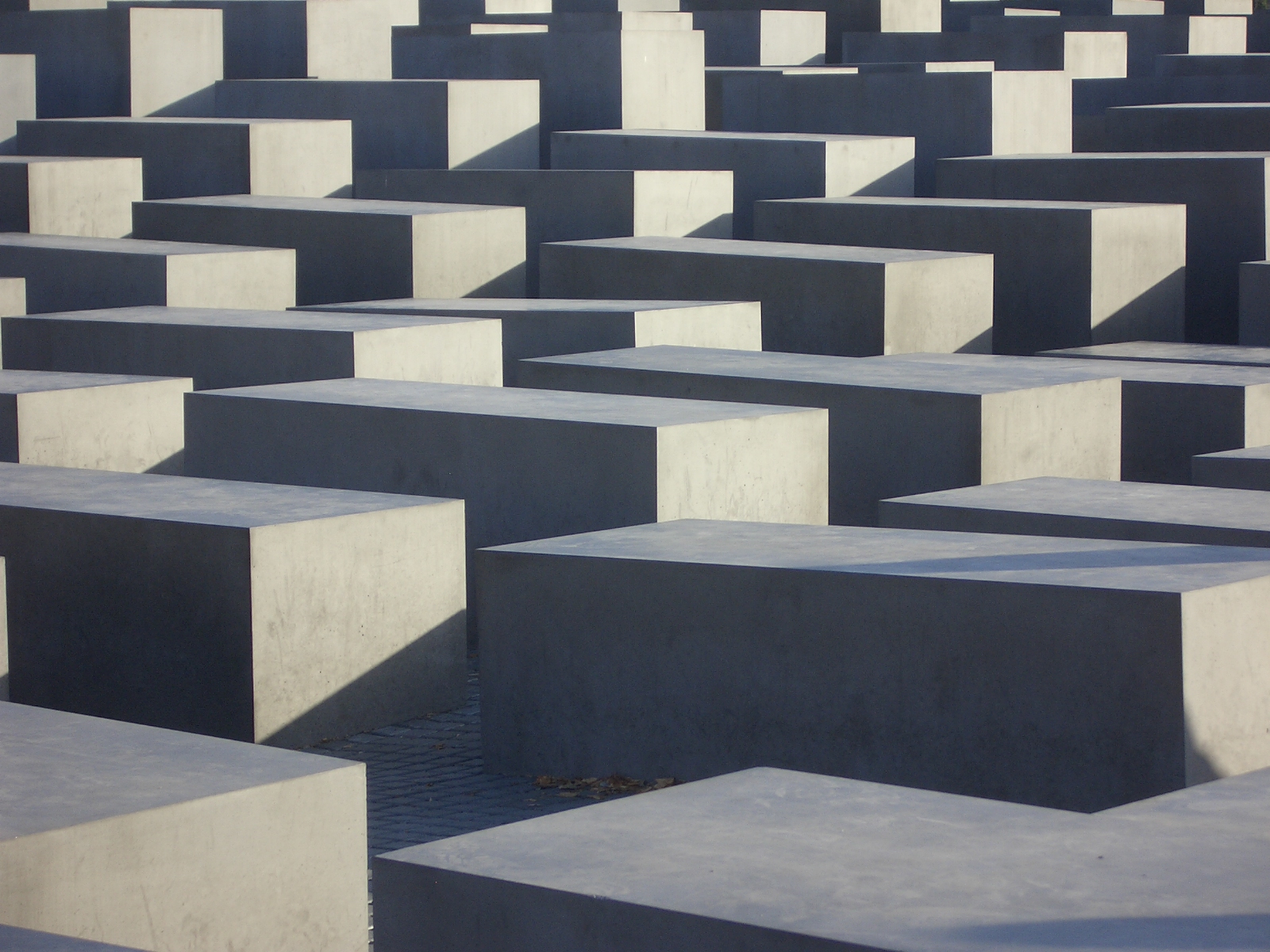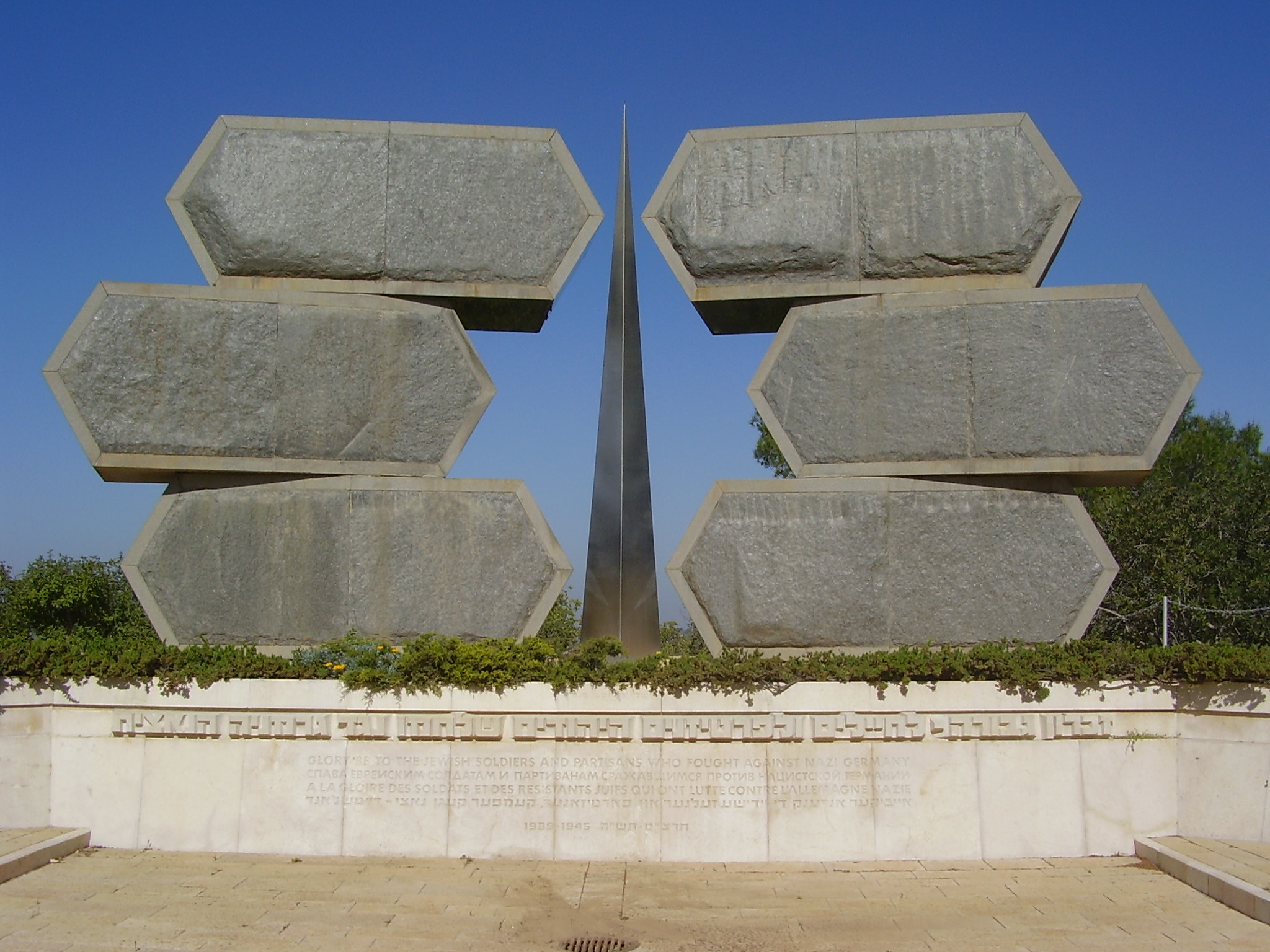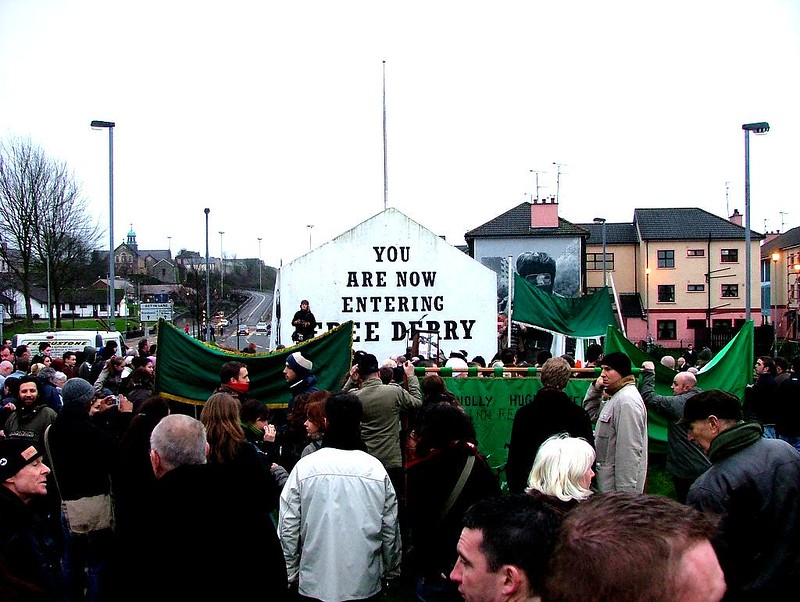District Six Museum
Museum
Theme: Political persecution

Address
25A Buitenkant Street, Zonnebloem
Country
South Africa
City
Cape Town
Continent
Africa
Theme: Political persecution
Purpose of Memory
To reconstruct the memory of the District Six community forcibly relocated in the framework of Apartheid, and to recompose in tangible and intangible terms the public culture of the area.
Public Access
Free
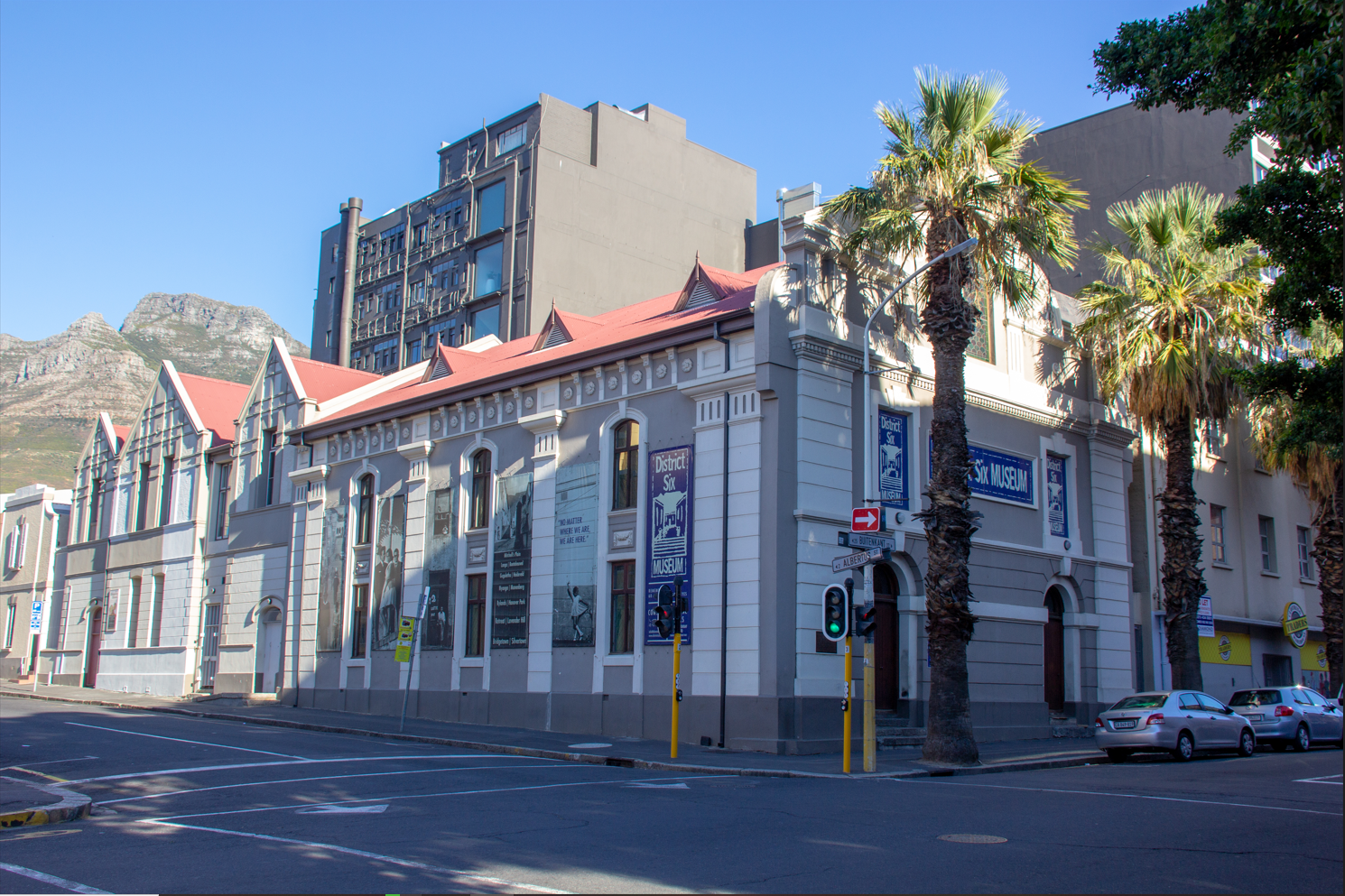
Location description
The District Six Museum is located in the District Six neighborhood of Cape Town. It consists of two interconnected buildings: the Museum and the “District Six Museum’s Homecoming Centre”.
The Museum building has two floors where infographics, photographs, newspaper articles, messages from former residents and artifacts documenting life in the District before it was destroyed under the apartheid regime are displayed. The ground floor’s floor is covered by a map with interventions by former residents marking the location of their former homes. The upper floor has recreations of house and store interiors. Crossing both floors is a column made of old street signs from the District and a 300-meter long wall with memorabilia from former residents. Two blocks away is the “District Six Museum’s Homecoming Center,” which holds educational meetings, funds the Museum by renting space, and serves as a welcome center for those returning to the District. Both buildings carry out programs to make visible the forced evictions experienced in District Six and host meetings related to the restitution of their lands.
Apartheid was a regime based on the racial segregation of populations implemented between 1948 and 1990 in South Africa by the National Party. The Groups Act (1950) divided the population into 4 racial groups -whites, mestizos, Indians and blacks- and established rights, obligations, and places of residence and circulation for each. Within this legal framework, 87% of the total area of South Africa was reserved for whites. District Six, then a Communist Party stronghold, was the main victim of the policy of forced displacement executed by the Apartheid.
Popularly known as Kanaldorp, District Six was one of Cape Town’s six wards established in 1867 and had become a vibrant center with links to the port and the city, housing a culturally diverse community of freed former slaves, Hindus, white Catholics, Malay Muslim ex-slaves, Arab artisans, traders, laborers and immigrants.
On February 11, 1966, District Six was declared an all-white area under the 1950 Group Areas Act, forcing the displacement of more than 60,000 people classified as black in apartheid terms. Although many residents resisted, by 1982 the communal life of the District had disappeared, homes had been destroyed and the area had been bulldozed with the exception of churches and mosques.
During apartheid, a group of activists, writers, journalists and artists resisted the destruction and real estate development of District Six. In 1988 former residents under the name “Hands off District Six” held a Conference where they concluded that District Six should be discussed in the framework of a democratic South Africa involving its former residents and have a museum of its own. The following year the District Six Museum Foundation began to organize meetings of former residents where they told their stories, discussed their future and initiated claims to their property.
South Africa’s first fully democratic and free elections in 1994 brought Nelson Mandela to power and began the process of ending apartheid. That year it was declared that those who could show that they had owned destroyed homes could return to the District.
On December 10, 1994, the Museum opened in the historic Methodist Church, a building known as the “freedom church”, where celebrations for the abolition of slavery, anti-apartheid protests and meetings between former residents had taken place. The Museum’s first exhibits were made up of remnants from the rubble and old street signs from the district, preserved and donated by a private individual. It later incorporated a 300-meter memory wall as a guest book, a portrait gallery of iconic District characters, and a canvas map made by artists that covers the floor and shows what the District’s streets looked like prior to its destruction.
From these exhibits, former residents began to tell their stories, bringing further objects and intervened in the museum with comments, memories and images. The Museum emerged as a community initiative and it is the former residents themselves who make constant interventions, guided tours and meetings.
Around 1996, the Land Rights Restitution Law was passed and a Land Rights Restitution Commission and a Land Claims Tribunal were established to enforce it. In addition, the Truth and Reconciliation Commission headed by Desmond Tutu was set up to repair the damage of the past and build a social memory based on the stories of victims of human rights violations occurred during apartheid.
Under this framework in 2002 the Museum incorporated “The District Six Museum Homecoming Centre”, a building located two blocks away and historically known as the “Sacks Futeran” textile and soft goods store where District families used to buy fabrics and supplies for clothing. Two years later Mandela handed over the keys to the first former residents who returned to District Six.
Today the District remains a visible wound of apartheid in South Africa and the neighborhoods to which the District Six residents were moved represent the marginalized populations of the country. In this sense, the Museum believes that land restitution contributes to cultural and urban reconstruction, as well as to the construction of the District as a site of memory and cultural heritage.
Among its activities, the Museum accompanies land claims by hosting talks on restitution, land tribunals and the signing of agreements. All of the Museum’s initiatives are simultaneously supported by the National Heritage Resources Act of 1999 -which protects sites of national significance by encouraging communities to preserve their heritage- and the Restitution of Land Rights Act of 1994 – which provides for the restitution of land rights to people who were dispossessed after June 19, 1913 under discriminatory or racial practices.
